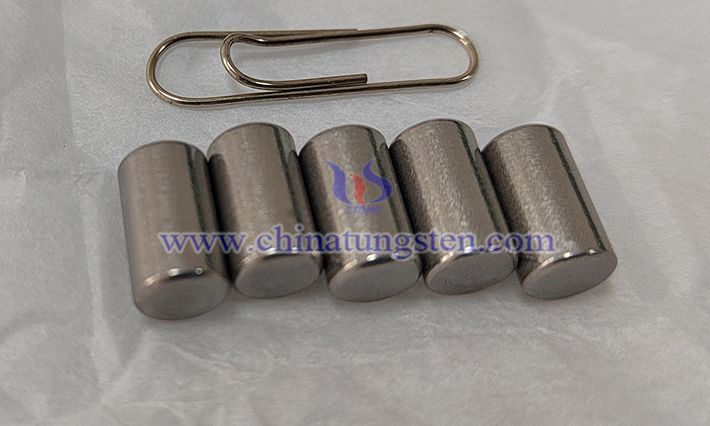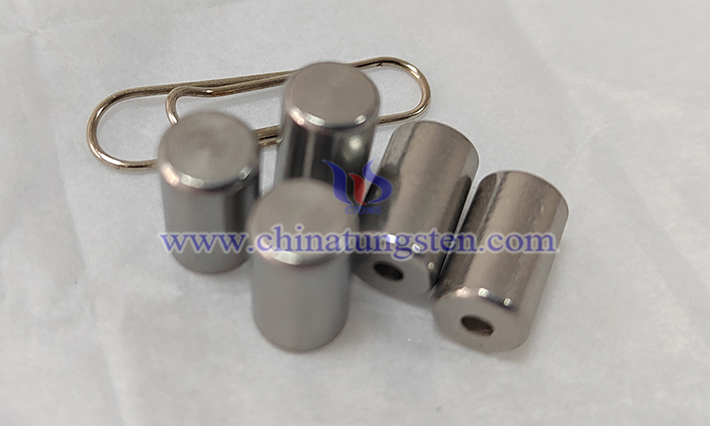Factors Affecting the Surface Roughness of Barium Tungsten Electrodes
- Details
- Category: Tungsten Information
- Published on Tuesday, 27 May 2025 17:43
The factors affecting the surface roughness of barium tungsten electrodes involve multiple links such as material preparation, working environment, processing technology and post-treatment, and their formation mechanism is complex and interrelated.

I. Influence of Material Composition and Preparation Process
1. Barium Tungsten Ratio and Emission Material Penetration
Ratio Optimization: The content of barium (Ba) directly affects the electron emission performance and thermal stability of the electrode. If the barium content is too high, it may cause uneven distribution of BaO in the tungsten matrix, forming local agglomeration or pores, and increasing the surface roughness; if the content is too low, it may reduce the electron emission efficiency of the electrode.
Impregnation Process: In the preparation of the impregnation method, the concentration of Ba(OH)₂ or BaCO₃ solution, the impregnation time and the subsequent calcination temperature need to be precisely controlled. If the penetration is insufficient or the calcination is uneven, the distribution of BaO will be discontinuous, forming microscopic protrusions or depressions.
2. Sintering Process and Microstructure
High Temperature Sintering: During high temperature sintering, the grain growth and densification of the tungsten matrix directly affect the surface roughness. Excessive sintering temperature or insufficient holding time may cause abnormal grain growth and form surface ripples; improper control of the sintering atmosphere (such as hydrogen or vacuum) may introduce impurities or oxidation, further damaging the surface flatness.
Finishing Steps: The final finishing process needs to be polished, sandblasted and other processes to ensure surface roughness. The choice of processing method (such as mechanical polishing vs. chemical mechanical polishing) and parameter setting (such as polishing pressure, time) are crucial to surface quality.
II. Influence of Working Environment and Use Conditions
1. Temperature and Thermal Stress
High Temperature Effect: At working temperatures above 1800K, barium atoms may volatilize, and grain growth or surface reconstruction may occur in the tungsten matrix, resulting in increased surface roughness. In addition, thermal stress caused by thermal cycles (such as frequent switching on and off) may cause microcracks or grain boundary fractures, destroying surface integrity.
Thermal Stability: The thermal stability of the barium tungsten electrode is affected by the barium tungsten ratio, sintering process and working environment. Surface roughness is negatively correlated with thermal stability. Rough surfaces are prone to form local hot spots, which accelerates material degradation.
2. Gas Composition and Chemical Reaction
Influence of Active Gases: Active gases such as oxygen and water vapor may react with the electrode surface to form BaO or WO₃ oxide layers. The growth rate and morphology of these oxide layers directly affect the surface roughness. For example, in an oxygen-containing environment, the oxidation of BaO may form an island structure, resulting in surface undulations.
Vacuum Control: A high vacuum environment can reduce the risk of oxidation and contamination and help keep the surface smooth. Low vacuum or residual gas may cause gas adsorption or chemical reaction, causing degradation of the surface microstructure.

III. Influence of Surface Treatment and Post-Treatment Technology
1. Chemical Cleaning and Heat Treatment
Chemical cleaning: The surface smoothness can be restored by removing surface oxides and contaminants through acid or alkaline washing. The concentration, temperature and time of the cleaning solution need to be optimized to avoid excessive corrosion of the substrate.
Heat Treatment: High temperature annealing (such as 1200-1400℃) in an inert atmosphere can eliminate residual stress in the preparation process, promote surface atomic rearrangement, and optimize the microstructure. Annealing temperature and time need to be precisely controlled to prevent excessive grain growth.
2. Coating and Plating Technology
Coating Uniformity: Ion implantation or plating (such as TiN, ZrN) can improve the electrode's resistance to fusion welding and wear resistance. However, coating thickness uniformity and adhesion directly affect surface roughness. If there are pinholes or peeling in the coating, it will lead to increased local roughness.
Coating Material Selection: The thermal expansion coefficient of the coating material needs to match the tungsten substrate to avoid cracking or shedding of the coating caused by thermal stress.
IV. Influence of Processing Parameters and Equipment Factors
1. EDM Parameters
Pulse Energy and Width: Pulse width and current peak directly affect the size and depth of the discharge pit. Increasing the pulse width or increasing the current peak will lead to larger pits and a rougher surface.
Electrode Loss: The loss rate of electrode material (such as sharp angle vs. obtuse angle) affects the contour accuracy of the machined surface. Uneven electrode loss may cause surface ripples or steps.
2. Equipment Accuracy and Chip Removal Conditions
Processing Stability: In EDM, the stability of the discharge gap and chip removal efficiency affect the surface quality. If chip removal is not smooth, the electro-erosion products may reattach to the electrode surface, forming a secondary discharge, resulting in increased surface roughness.
Equipment Rigidity: Insufficient rigidity of the processing equipment may cause vibration or deformation, which in turn causes surface ripples or scratches.
V. Influence of Storage and Maintenance Conditions
1. Moisture and Pollution Prevention
Storage Environment: Barium tungsten electrodes should be stored in a dry vacuum environment to avoid moisture or long-term exposure to the atmosphere. A humid environment may cause surface oxidation or corrosion, increasing roughness.
Maintenance: Regularly clean the electrode surface to remove pollutants and oxide layers to extend the electrode life and keep the surface smooth.
- Chinatungsten Online: www.tungsten.com.cn
- CTIA GROUP LTD: en.ctia.group
- Tungsten News & Price: www.ctia.com.cn
- Molybdenum News & Price: news.molybdenum.com.cn
- Tel.: 86 592 5129696; Email: sales@chinatungsten.com



 sales@chinatungsten.com
sales@chinatungsten.com